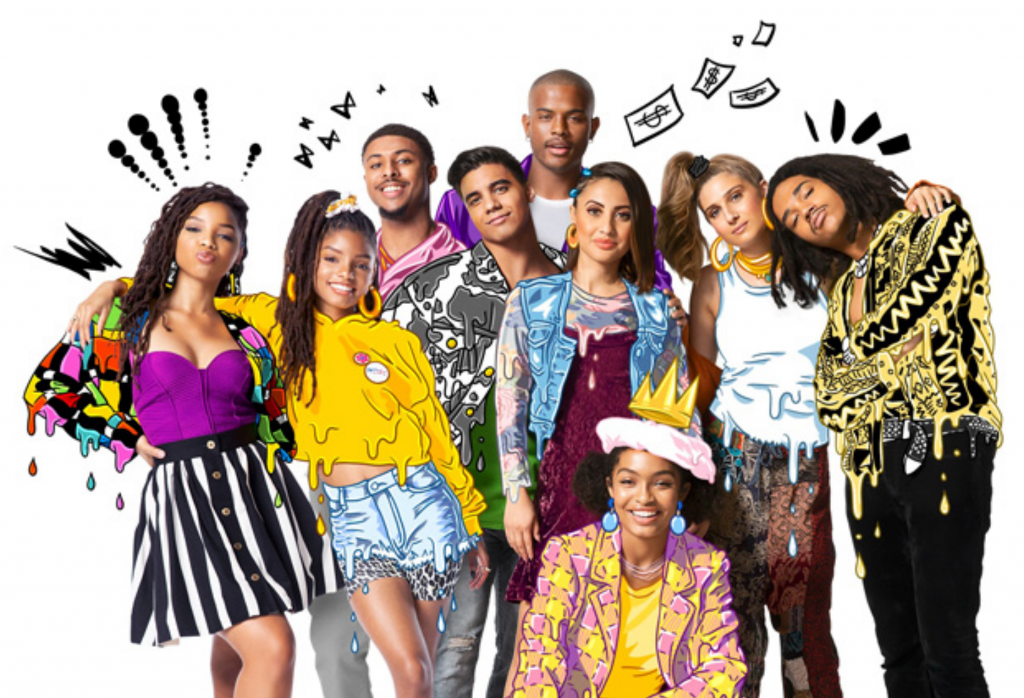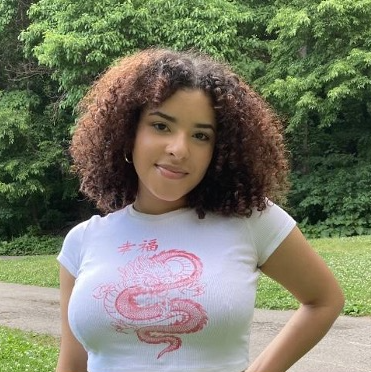By Kimberley Castano & Claire Netemeyer, University of Virginia students
This blog post is the fifth and final in a Media & Black Adolescents Series by youth analyzing movies and TV series that reflect the experiences and identity development of Black adolescents. For more posts, please visit our blog. Special thanks to Dr. Valerie Adams-Bass for her support of this series and the youth in her classes.
Highlights:
- Undergraduate students taking a “Media Socialization, Racial Stereotypes and Black Adolescent Identity” college course were asked to critique movies and television series, analyzing the media content and applying theory or research.
- This Media & Black Adolescents Series reflects on a spectrum of experiences for Black adolescents that are grounded in racial and media socialization reflected in the movies. These blogs address racial stereotypes as they relate to contemporary social issues and the identity development experiences of Black youth.
- For this final of five posts in the series, the two youth writers review “Grown-ish,” a spin-off of the hit show Black-ish that follows young Black woman Zoey on her journey at college with a group of friends.
For parents or educators who may choose to use this TV series as a teaching/learning tool, here are some possible discussion questions:
- Based on the summary of the episode, do you think that these characters in Grown-ish falls into historic Black stereotypes or not?
- What effect does watching a show featuring mostly Black characters have on potential adolescent and teenage viewers? On both Black and White audiences?
- Do shows/movies that have a majority Black audience have the obligation to inform their Black audience of real world issues and realities they may face later down the road?
- Why is it consistently the audience who has to call our directors and creators when creating media. Are there ways to change the narrative of these shows and will we ever see big changes?

The TV series Grown-ish is a spin-off of Black-ish, following the life of the eldest daughter. Yara Shahidi plays Zoey Johnson, and viewers see her experiences as she maneuvers life at Cal-U, a fictional university in Los Angeles. When I was in high school, I began watching this show, and it made me fantasize about college and all the people I would meet. However, now that I am in my second year at the University of Virginia, I recognize that the image of college portrayed in this film is far from the truth. I chose to analyze the episode titled Can’t Knock the Hustle in which Zoey is cut off from her father because she cheated and was almost expelled from school.
Children learn many behaviors from television, and the exposure to certain shows is what they will take away as the program’s overall meaning. According to Brooke and O’Connor (2000), racial socialization is the process in which Black parents equip their children with the skills and strategies necessary to cope with the knowledge of being Black in society (pg. 512). However, the media also plays a major role in the socialization of Black children. When shows like Grown-ish alter the reality of real-world experiences, children can be deceived and disappointed when they are put into those positions. In this case, Zoey is cut off financially by her parents, but she is still wearing high-end designer brands like YSL and other expensive clothing from Barneys and Saks Fifth. Her situation is far from the struggle that the episode depicts.
Read more from this critique by
A spin-off of the hit shows Black-ish and Mixed-ish, Grown-ish follows young Black woman Zoey on her journey to college and details not only her own life but also that of her friends. Featuring both Black and non-Black characters, the show must negotiate the historic stereotypes of Black individuals that seem to both highlight and combat them.
I watched season one, episode ten of Grown-ish where main character Zoey’s friends are hanging out in a bar, and twins Jazz and Sky start talking about how Black men at their college are only interested in dating White women. They share their struggles to find partners as Black women to their friends, and mention “the list” of most dateable women in which White women are most preferable and Black women are the least. They also observe their friends and others flirting at the bar. The conversation and character actions over the next day reveals critical themes and ideas about Black femininities, masculinities, and their accompanying stereotypes (the brute and the sapphire).
Read more from this critique by
If you have any comments or questions about this post, please email Youth-Nex@virginia.edu. Please visit the Youth-Nex Homepage for up to date information about the work happening at the center.

Author Bio: Kimberley Castano is a second-year at the University of Virginia originally from Queens, New York. She is majoring in Global Development studies with a minor in African American and African studies. She is interested in studying the ongoing effects of colonization, globalization, and imperialism on different communities in the African-diaspora, specifically in the Caribbean. In her free time she likes to try new foods, create art with friends, and watch movies.

Author Bio: Claire Netemeyer is a fourth year student at the University of Virginia and is studying Media Studies and Spanish. She will be attending Teachers College at Columbia University next year to study higher education and hopes to use her communications background in a career in college admissions with a focus on inclusivity and diversity. In her free time she enjoys musical theater, baking, and spending time outdoors.
